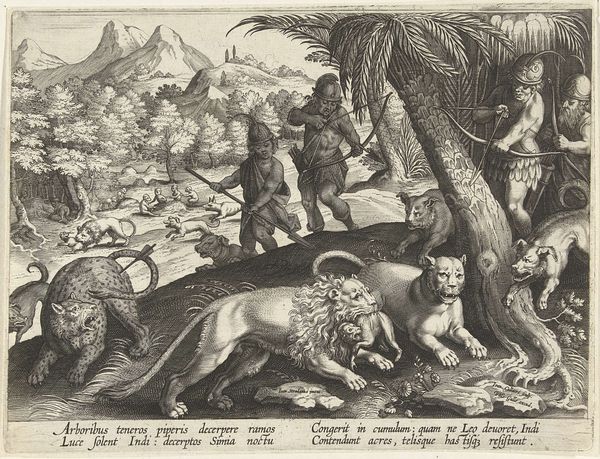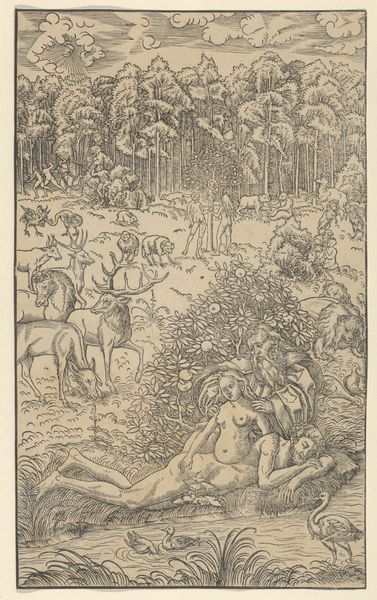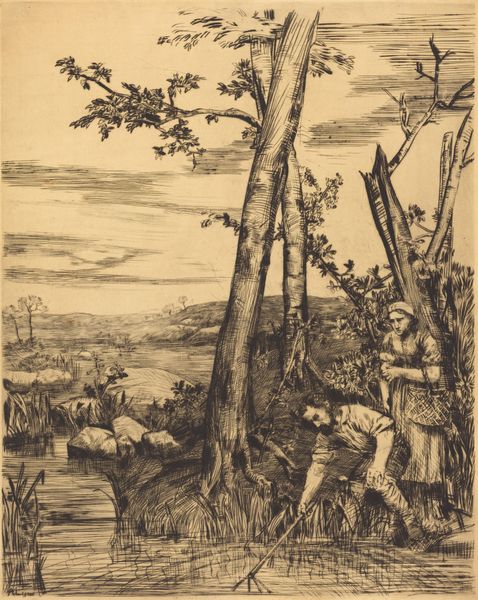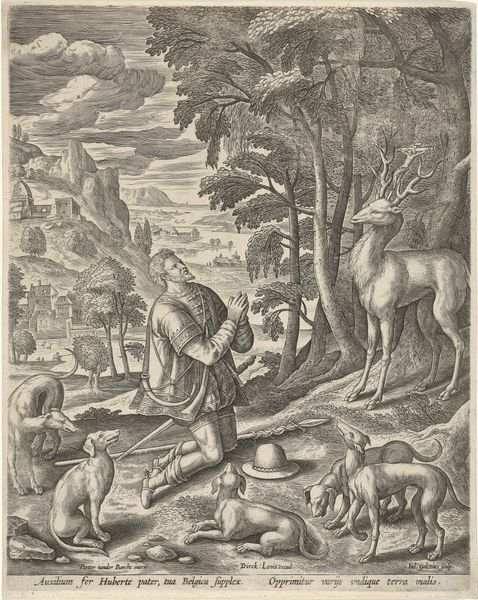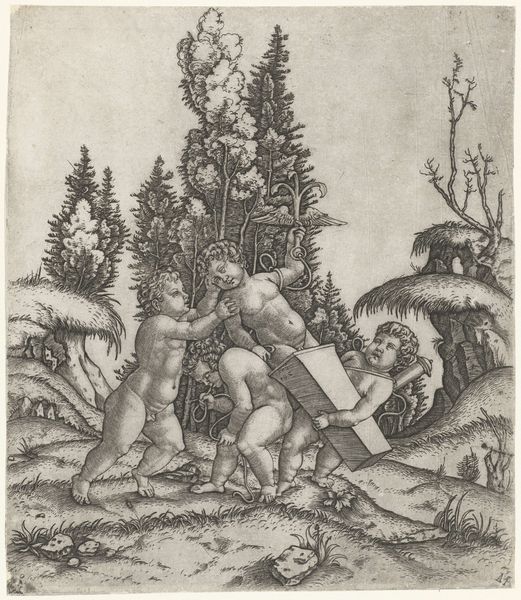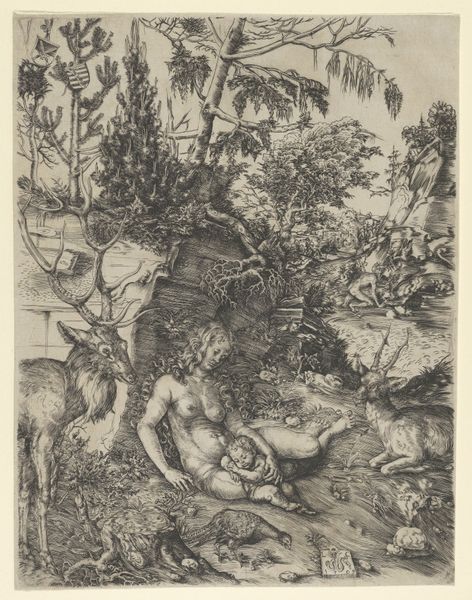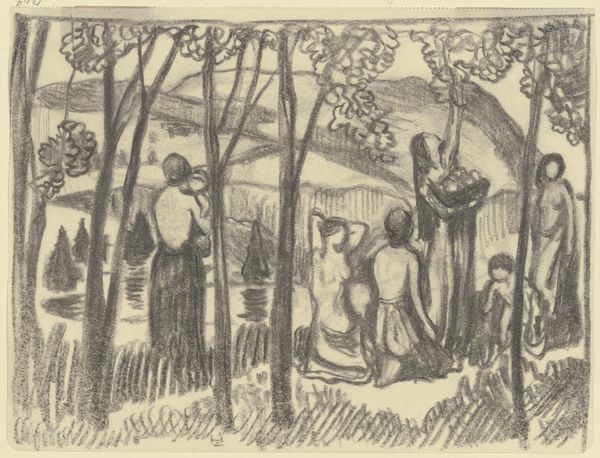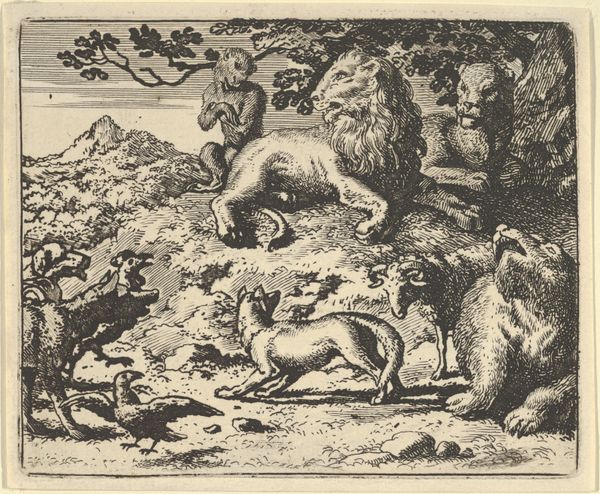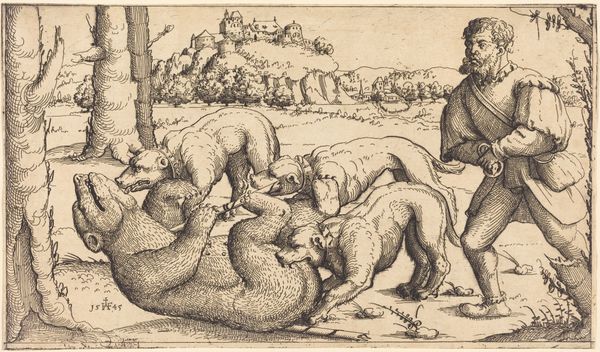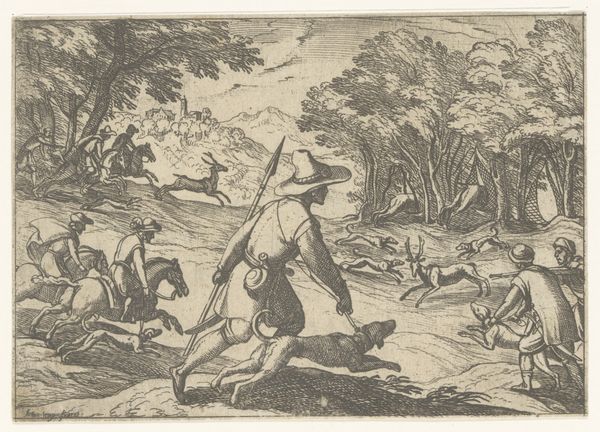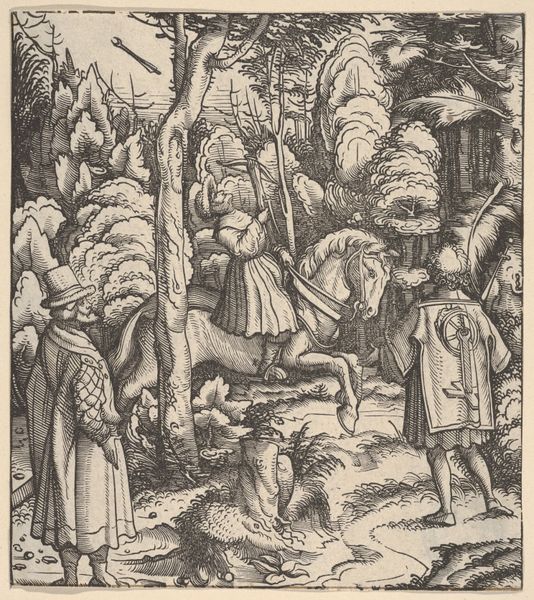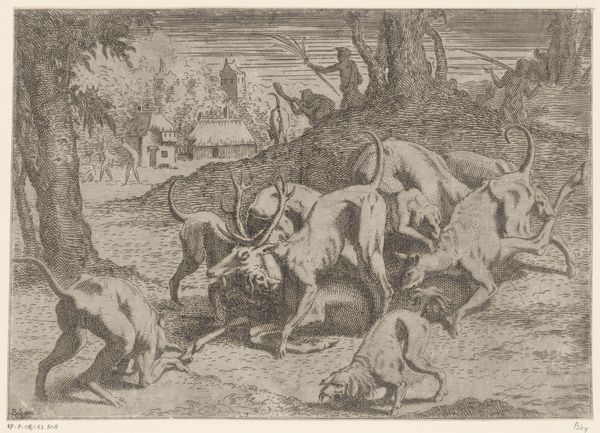
drawing, print, graphite
#
drawing
#
narrative-art
# print
#
landscape
#
graphite
#
realism
Dimensions: image: 30.5 × 25.4 cm (12 × 10 in.) sheet: 41 × 31.8 cm (16 1/8 × 12 1/2 in.)
Copyright: National Gallery of Art: CC0 1.0
Curator: Merritt Mauzey's "Rows End," a print made around 1940, really pulls you into a bleak landscape. Editor: Bleak is the word! My first thought was post-apocalyptic, almost like a charcoal rendering of a Cormac McCarthy novel. Curator: Mauzey uses graphite to create an etching-like effect, focusing on the raw texture of the cut tree stumps, upturned tools, and animals foraging. You feel the weight of labor etched into the landscape itself. Editor: It's more than labor, though, isn't it? It’s about what happens when labor strips the land bare. Those sparse trees in the background – they look like skeletal fingers pointing to the sky. The sow drinking out of the trough looks defeated too. Curator: The means of production and its effects are definitely foregrounded. Consider the composition; Mauzey's meticulous cross-hatching emphasizes the systematic depletion of resources. It prompts questions: what remains after industry leaves a place behind? And who is left to deal with the fallout? Editor: Precisely. Artistically, it's a powerful contrast: so much fine detail to depict such emptiness. Even the placement of the human figures – one slumped in exhaustion, the other, equally weary. They are part of this scene of devastation, not masters of it. Curator: This image clearly depicts narrative art with a message about industrial consumption and land degradation. And while "Rows End" clearly focuses on that message it uses very accessible methods and imagery of the era. Editor: And somehow it still feels painfully relevant today. Perhaps because it's less about a specific historical event and more about a timeless cautionary tale of man versus nature, meticulously rendered on paper. The medium itself reinforces the message: the slow, grinding impact. Curator: It certainly is, with its quiet starkness and unwavering view of labor and resources; there is still something for me to explore. Editor: Yes. Each detail – the texture of the graphite, the posture of the figures – offers a new path of consideration within a scene that feels eerily familiar.
Comments
No comments
Be the first to comment and join the conversation on the ultimate creative platform.
